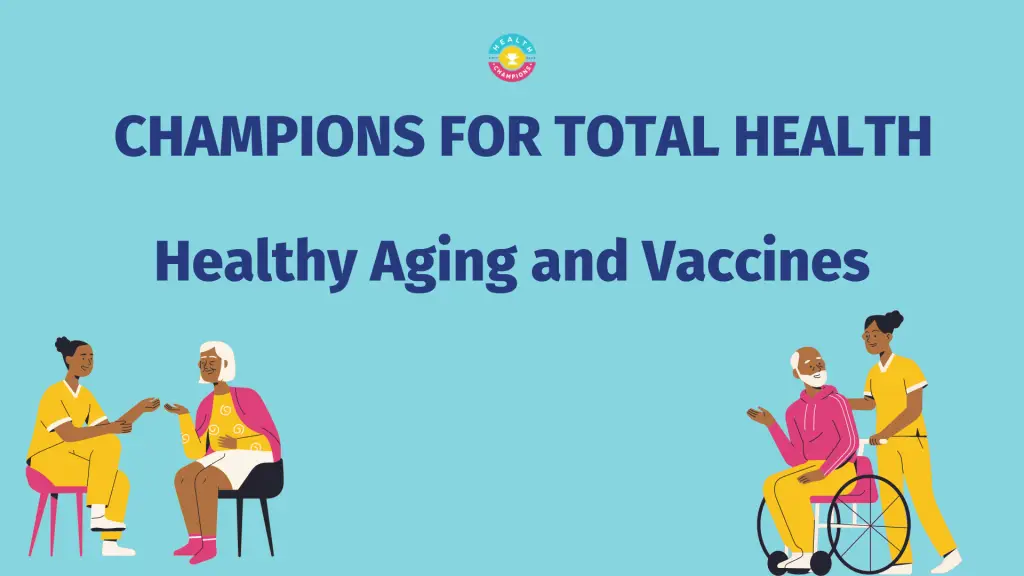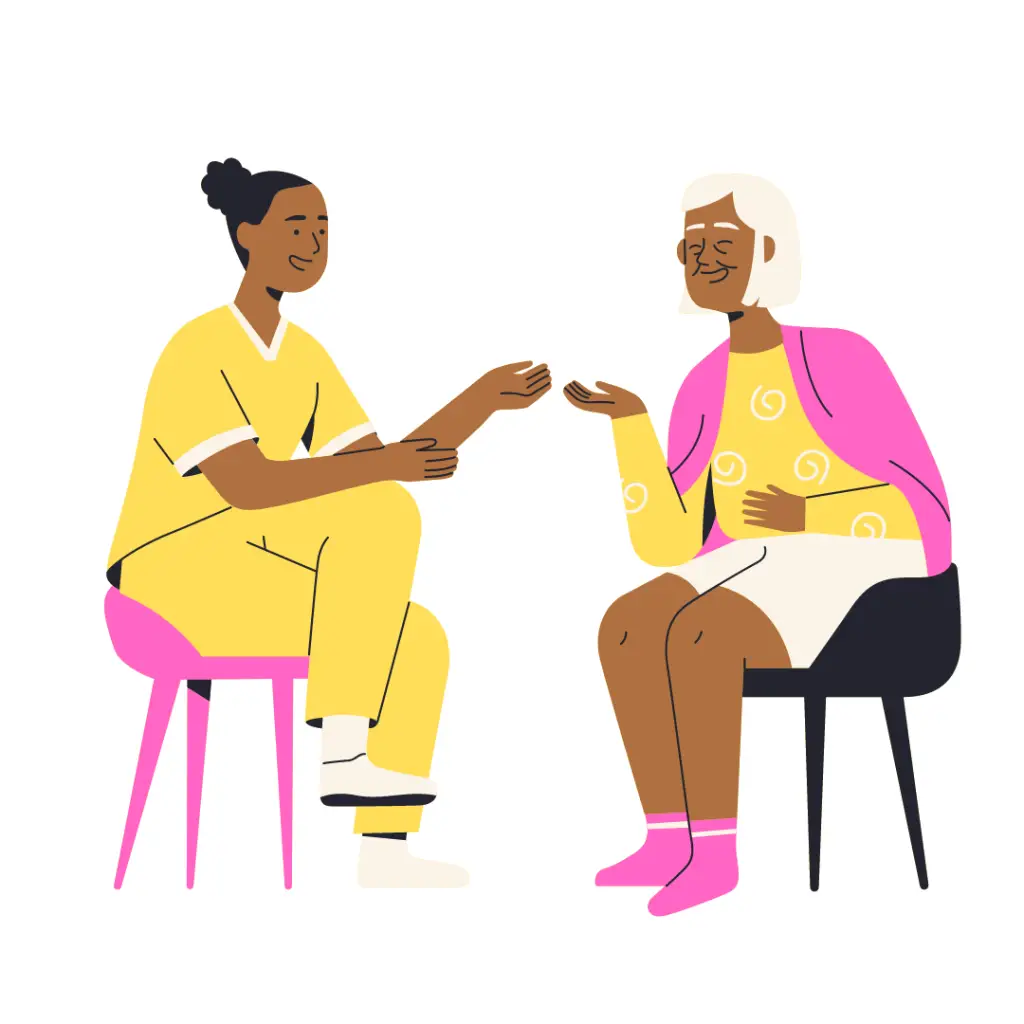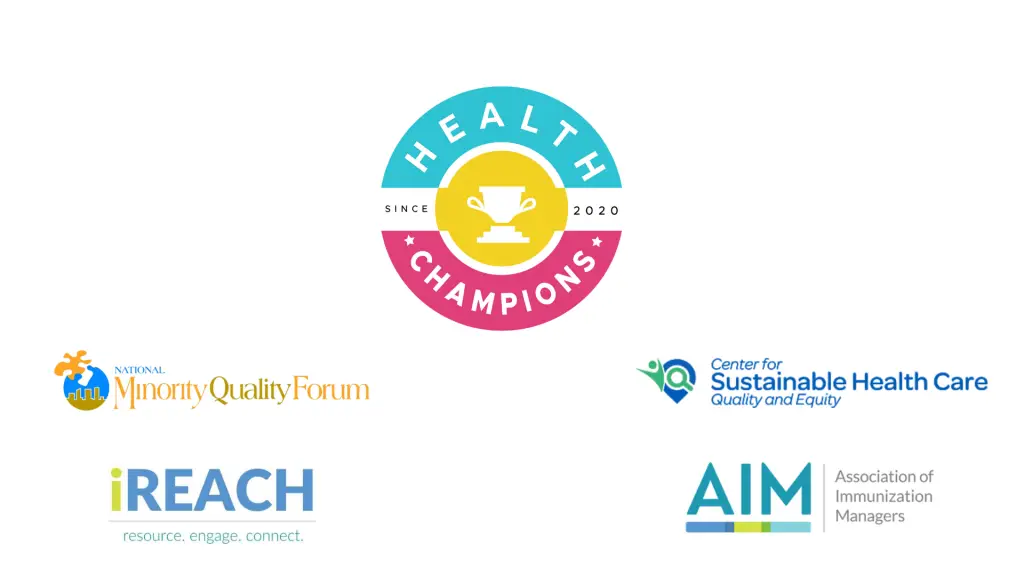
Table of Contents
Aging Defined
What is Aging?
- In biological terms, aging occurs as an accumulation of molecular and cellular damage over the course of one’s life
- Aging leads to a gradual decline in physical and cognitive abilities and capacities
- Aging individuals are at higher risk of developing diseases
- These things ultimately lead to death
(WHO, 2021)
An Aging Population

- The World Health Organization (WHO) has predicted that, by the year 2050, the number of people aged 60 years and older will double from its number in 2015
- WHO also predicts that people aged 60 years and older will outnumber children younger than 5 years
- 80% of people aged 60 years and older are predicted to live in low and middle-income countries
- This demographic shift presents an opportunity to meet the needs of older adults
(WHO, 2021)
Health Inequities in Aging Populations
Social Determinants of Health (SDOH) in Aging
- Black adults face disparities with healthy aging as they encounter the effects of institutional and structural racism, which leads to worse health outcomes
- Both social and economic factors contribute to this decline, which have again been exacerbated by structural racism
- The National Institute on Aging notes that there are several SDOH that play a critical role in aging and contribute to health inequities during the aging process
- These SDOH include:
- Residential Segregation
- Discrimination
- Immigration
- Social Mobility
- Work and Retirement
- Education
- Income and Wealth
- These SDOH often determine the quality of life an older adult may live as they age


Inequities in Aging for Black Adults
- Black adults face disparities with healthy aging as they encounter the effects of institutional and structural racism, which leads to worse health outcomes
- Both social and economic factors contribute to this decline, which have again been exacberated by structural racism
- Risks of diabetes, heart disease, and stroke increase among Black adults due to hypertension and lack of diabetes prevention
- A variety of explanations in the very rapid decline of the physiology of Black adults include:
- Economic hardship
- Shortcomings in primary disease prevention
- Structural racism
- Difficulties in managing chronic diseases over time
- Discrimination-related stress
(Scommegna & Mather, 2021)
- Relative to aging white adults, older Black adults have higher rates of disability
- These disabilities often relate to and preclude older Black adults from performing the basic activities of daily living, such as bathing and dressing
- The three factors that strongly contribute to these disabilities are:
- Diabetes
- Heart Disease
- Stroke
- Aging Black adults may also have less access to safe home environments and disease managing medications
- COVID-19 has certainly exacerbated these historic inequities for aging Black adults
(Scommegna & Mather, 2021)

Flu and COVID-19 in Older Populations
Flu in Older Adults
- Although older age groups have some of the highest seasonal influenza vaccination rates, individuals over age 65 make up 2/3 of the 200,000 flu-related hospitalizations each year, regardless of their risk for serious disease, and 90% of the approximately 36,000 annual deaths (CDC website estimates 50-70% of recent year flu hospitilizations and 70-80% of deaths are in people 65+ https://www.cdc.gov/flu/highrisk/65over.htm)
- Older individuals are at higher risk for influenza-associated heart attacks, congestive heart failure, stroke, and cognitive decline
- More than 1 in 7 older adults who are hospitalized for flu will experience catastrophic disability and loss of independence
- It is thought that older adults have decreased protection from influenza vaccination due to age-related changes in immune system cells that produce antibodies and fight infection. This process of the immune system declining with age is called “immunosenescence”
- Flu shots are also tied to a lower risk of a stroke
- This flu season, CDC recommends that people 65 years and older receive a higher-dose flu
vaccine or an adjuvanted flu vaccine rather than a standard dose flu vaccine because these
flu vaccines are more effective in this age group


COVID-19 in Older Adults
- Older unvaccinated adults are more likely to be hospitilized or die from COVID-19. People 85 years and older are the most likely to get very sick.
- Per the Centers for Disease Control and Prevention, adults 65 years old and older who were fully vaccinated with an mRNA COVID-19 vaccine (Pfizer-BioNTech or Moderna) had:
- 94% reduction in risk of COVID-19 hospitalizations
- 64% decreased risk of COVID-19 hospitilization is partially vaccinated (Pfizer-BioNTech or Moderna)
- Studies suggest protection from the vaccine is roughly the same as in the younger population
- CDC also reccomends that everyone 12 and older who has completed the primary series recieve a COVID-19 booster dose usine one of the new bivalent (“omnicron”) booster vaccines to ensure protection against COVID-19 this fall and winter
(Ford & Savitz, 2022) (Gawthrop, 2022)(CDC)
Vaccinations for Older Populations
Updated ACIP Recommendations
- ACIP recommends that adults aged ≥65 years receive one of the
following influenza vaccines
○Quadrivalent high-dose inactivated influenza vaccine (HD-IIV4)
○Quadrivalent recombinant influenza vaccine (RIV4)
○Quadrivalent adjuvanted inactivated influenza vaccine (aIIV4)
If none of these three vaccines is available at an opportunity for
vaccine administration, then any other age-appropriate influenza
vaccine should be used.
Vaccinations are Important!
- According to experts, 2022 was the second straight year for an observed decline in life expectancy
- The need to get people booster vaccines against COVID-19and decreasing life expectancy are two overlapping public health emergencies
- COVID-19 poses a specific threat to life expectancy across Black populations
- The age-adjusted mortality rate for Black Americans is 68% higher than the same measure for white Americans.
- Once age-adjusted, the highest COVID-19 mortality rates for Black Americans are in Mississippi, Iowa, Nevada, New Jersey, and Michigan
(Overlapping Public Health Emergencies 2022)


Vaccinations in Older Adults
- Likewise, the National Adult and Influenza Immunization Summit (NAIIS) notes that disparities in vaccinations in older adults exist
- White adults aged 60 years and older had a higher rate of shingles vaccination (34.6%) than Black adults (13.6%), Hispanic adults (16.0%), and Asian American adults (26.0%)
- The National Adult and Influenza Immunization Summit (NAIIS) notes that disparities in vaccinations in older adults exist
- Pneumococcal vaccination is recommended for all adults 65
years and older (there are two types of pneumococcal vaccines
that are needed- talk to your doctor about when you should
receive each) - CDC recommends a single dose of Shingles vaccine (Zoster
vaccine) for everyone 60 years and older, whether or not they
have ever had shingles before - All adults should get a Tdap (Tetanus, diptheria and whooping
cough) vaccine once and then a Td (tetanus, diphtheria) or Tdap
booster shot every 10 years. - Adults 60 years and older with risk factors can receive a hepatitis
B vaccine and those wishing to be protected may also receive
this vaccine
(Overlapping Public Health Emergencies 2022)


High Flu Dose Vaccine
- Among those vaccinated minority groups were 26–32% less likely to receive
High-Dose VAccine (HDV), relative to white people
• A study analysed many variables such as differences in education,
household income, medical history, community and vaccinator
characteristics did not fully explain the disparities.
• The study did find that there is a racial and ethnic disparity between those
who not only receive Influenza vaccinations but also those who receive
HDV’s. This disparity was noted even between those who received and
presumably wanted to be vaccinated against Influenza.
(Mahmud, 2022) (Mahmud, 2021)
Additional Resources
Webinar: Healthy Aging
Sources
- Centers for Disease Control and Prevention. (2021, August 4). Older adults risks and vaccine information. Centers for Disease Control and Prevention. Retrieved September 23, 2022, from https://www.cdc.gov/aging/covid19/covid19-older-adults.html#:~:text=Adults%2065%20years%20old%20and,Pfizer%2DBioNTech%20or%20Moderna
- Centers for Disease Control and Prevention. (2022, February 17). Adult immunization schedule by vaccine and age group. Centers for Disease Control and Prevention. Retrieved September 23, 2022, from https://www.cdc.gov/vaccines/schedules/hcp/imz/adult.html
- Ford, B. N., & Savitz, J. (2022). Depression, aging, and immunity: Implications for covid-19 vaccine immunogenicity. Immunity & Ageing, 19(1). https://doi.org/10.1186/s12979-022-00288-7
- Gawthrop, E. (2022, September 14). Color of coronavirus: Covid-19 deaths analyzed by race and ethnicity. APM Research Lab. Retrieved September 23, 2022, from https://www.apmresearchlab.org/covid/deaths-by-race#black
- George, J. (2022, September 7). Flu shots tied to lower stroke risk. Medical News. Retrieved September 23, 2022, from https://www.medpagetoday.com/neurology/strokes/100583?xid=nl_mpt_DHE_2022-09-07&eun=g1731605d0r&utm_source=Sailthru&utm_medium=email&utm_campaign=Daily+Headlines+Evening+2022-09-07&utm_term=NL_Daily_DHE_dual-gmail-definition
- McElhaney, J. E., Verschoor, C. P., Andrew, M. K., Haynes, L., Kuchel, G. A., & Pawelec, G. (2020). The immune response to influenza in older humans: Beyond immune senescence. Immunity & Ageing, 17(1). https://doi.org/10.1186/s12979-020-00181-1
- NIHCM Foundation. (2022, September 8). Overlapping Public Health Emergencies. NIHCM. Retrieved September 23, 2022, from https://nihcm.org/newsletter/overlapping-public-health-emergencies?utm_source=NIHCM%2BFoundation&utm_campaign=ff56d1d154-nihcm-newsletter-September-2022&utm_medium=email&utm_term=0_6f88de9846-ff56d1d154-360274026
- Scommegna, P., & Mather, M. (2021, May). Key Factors Underlying Racial Disparities in Health Between Black and White Older Americans. PRB. Retrieved September 23, 2022, from https://www.prb.org/resources/u-s-racial-health-disparities-among-older-adults-remain-despite-some-progress/
- U.S. Department of Health and Human Services. (n.d.). Goal F: Understand health disparities related to aging and develop strategies to improve the health status of older adults in diverse populations. National Institute on Aging. Retrieved September 23, 2022, from https://www.nia.nih.gov/about/aging-strategic-directions-research/goal-health-disparities-adults
- World Health Organization. (2021, October 4). Ageing and health. World Health Organization. Retrieved September 23, 2022, from https://www.who.int/news-room/fact-sheets/detail/ageing-and-health
